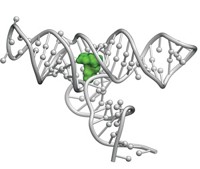Advertisement
Grab your lab coat. Let's get started
Welcome!
Welcome!
Create an account below to get 6 C&EN articles per month, receive newsletters and more - all free.
It seems this is your first time logging in online. Please enter the following information to continue.
As an ACS member you automatically get access to this site. All we need is few more details to create your reading experience.
Not you? Sign in with a different account.
Not you? Sign in with a different account.
ERROR 1
ERROR 1
ERROR 2
ERROR 2
ERROR 2
ERROR 2
ERROR 2
Password and Confirm password must match.
If you have an ACS member number, please enter it here so we can link this account to your membership. (optional)
ERROR 2
ACS values your privacy. By submitting your information, you are gaining access to C&EN and subscribing to our weekly newsletter. We use the information you provide to make your reading experience better, and we will never sell your data to third party members.
Start-ups
Celgene partners with Skyhawk Therapeutics to drug RNA with small molecules
Skyhawk will receive $60 million up front to develop drug candidates that target RNA in neurological diseases
by Ryan Cross
June 26, 2018
| A version of this story appeared in
Volume 96, Issue 27
Skyhawk Therapeutics is the latest start-up to gain attention and cash from a major drug company wanting to target RNA, the intermediary between DNA and proteins. Celgene will pay Skyhawk $60 million up front as part of a five-year partnership to develop drugs for neurological diseases such as amyotrophic lateral sclerosis (ALS) and Huntington’s disease.
The Waltham, Mass.-based start-up also revealed a $40 million equity investment, bringing its new funds to $100 million for the growing field of drugging RNA with small molecules.

Almost all small-molecule drugs work by binding proteins. Many chemists and drug companies have long considered drugging human RNA too difficult due to its presumably large, floppy structure. That’s beginning to change, thanks to new tools and a better understanding of how RNAs fold into potentially exploitable structures under certain conditions.
Several companies are hoping to tap human RNAs as a vast pool of drug targets. In February 2017, Arrakis Therapeutics announced raising $38 million to do this. Expansion Therapeutics raised $55 million in January. And Novartis signaled its intense interest in exploring human RNA structures and their potential as drug targets in a Cell paper published in March.
“I believe this will be an extraordinarily important new field,” says Bill Haney, CEO and cofounder of Skyhawk. Haney, who cofounded an immuno-oncology start-up called Dragonfly Therapeutics in 2015, was motivated to launch Skyhawk after watching the progress of a drug candidate for a rare neurological condition called spinal muscular atrophy (SMA). That compound, currently in development by Roche and PTC Therapeutics, was the first small molecule to modify a process called RNA splicing, which is dysfunctional in SMA.
Skyhawk is focused on targeting human messenger RNA (mRNA), the kind that cells use as instructions for making proteins. Before mRNA is translated into a protein, though, cells must separate the segments of mRNA that actually code for the protein, called exons, from interspersed stretches called introns. A complex process that excises the introns and splices together the exons results in a fully functional mRNA. But mutations in mRNA can disrupt the normal process of cutting and joining. If an exon is skipped, for instance, the resulting protein might not work.
The experimental SMA drug from Roche and PTC modifies this splicing process, and changes the protein output, to treat the disease. “A lot of the people at Skyhawk now were people who developed that compound,” Haney says. Those scientists include Skyhawk cofounder and Chief Scientific Officer Kathleen McCarthy, who was previously at Roche.
Skyhawk will take a similar approach to develop compounds targeting mRNA splice sites for neurological disease, inflammatory conditions, and cancer. Much like Roche and PTC did with their compound, Haney says, Skyhawk doesn’t plan to target the wobbly mRNA alone but rather the transient structure that mRNA forms when bound to protein splicing machinery.
Advertisement
Skyhawk also has its own programs directing small molecules to the mRNA of transcription factors, proteins that control the expression of other genes. Although traditionally considered undruggable, transcription factors are well studied in many cancers, and companies are increasingly devising new ways to attempt to block them. Haney won’t name any specific targets but says the company plans to begin testing its first cancer drug in humans next year.





Join the conversation
Contact the reporter
Submit a Letter to the Editor for publication
Engage with us on Twitter